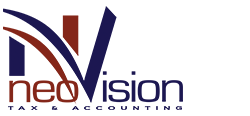As a business owner, your goal is to receive the money you bill out to clients as quickly as possible. Of course, your clients may try to hold onto their hard-earned money for as long as they can, which can result in paying you much later than you want. This issue may have you implementing different payment terms, some that you may have never even heard of before, into your small business model. The goal of adding these payment terms in, is to ensure you get paid within a reasonable amount of time and enjoy an excellent relationship with all of your clients.
Types of Payment Terms
Prepay/Early/Timely Pay Discount
Most invoices are either due upon receipt or net 30 or net 45. The former is easy to understand because the payment is due immediately. The latter two mean that payment is due either within 30 or 45 days.
For those clients that pay on time regularly, you can always offer them a timely pay discount. This could be something as simple as taking 2% off their invoice each month. Most of the time, this is listed as 2/10 Net 30. What that means is your client can take 2% off their invoiced amount if they pay within 10 days.
You can also offer small discounts to those clients that want to prepay for your services or pay before they even receive the invoice.
As a business owner, you do not need to offer a discount to those clients who pay in advance or pay on time. You can even demand that payment is delivered in full prior to the service being completed. But your regular clients will appreciate a discount if you do choose to give one.
Recurring Invoices with Recurring Payments
If you have a business where your clients pay the same amount from month to month, you may send them recurring invoices. Since the amount billed is the same each month, you can automatically set these invoices to be sent out on a designated day each month.
While your clients can pay these invoices within the payment terms on the invoice, you may prefer if they have a recurring payment option on file. This payment option will allow you to automatically charge your client’s credit card or deduct the amount from their checking account.
This is an excellent option for both you and your clients. You get your money immediately and they don’t need to worry about paying your invoice each month.
Payment Plans
As a business owner, you can choose to offer your clients payment plans for all of your services. Depending on your business, you may have one simple payment plan or you may have multiple service plans.
An example of a single payment plan you may offer is:
Clients owe you $1,000 for your services. They can pay that fee in 3 installments.
Installment 1: $500 due on a specific date
Installment 2: $250 due 1 month later
Installment 3: $250 due 15 days later or 1 month later
Multiple payment plans could be something you offer if you have different services with higher rates. It is up to you as the business owner to determine whether payment plans are something you want to offer and which types of payment plans make sense for your business.
Line of Credit
A line of credit is not a payment that most businesses accept from clients. However, you may choose to offer a line of credit to long-term clients. Lines of credit basically allow a client to carry a balance up to a certain amount, pay off that balance, and then carry a balance up to that same amount once again.
It is more common for a business to have a line of credit with their bank for business expenses. This ensures a business has access to money if an expense comes up that the business does not have the cash to cover. As a business though, you really want to keep lines of credit, as well as credit card usage, to a minimum. The reason for this is it is quite easy to overspend in your business using credit, which then will eat into your profits.
Before offering a line of credit, or a payment plan, to a client, make sure they are not a credit risk. Some people are notorious for not paying their debts and you don’t want to offer this solution to a person who will never pay you.
No matter what payment terms you choose for your business, one thing you must do is make it simple for your clients to pay you. Online payment options, or recurring automatic payments, are always going to be best for everyone. While you can accept checks, remember that it takes time for checks to be written and then sent in the mail.
You should also be extremely clear about due dates and charge late fees when those due dates are missed. It may only take one late fee for a client to start paying you on time. Those late-paying clients may even change the way they pay you after receiving a late fee or two.
Do you have any questions about the payment terms for your business and how it could be affecting your bottom line? Contact my office today to schedule a meeting. We can help you determine if the payment terms you are offering are the best for your business.

